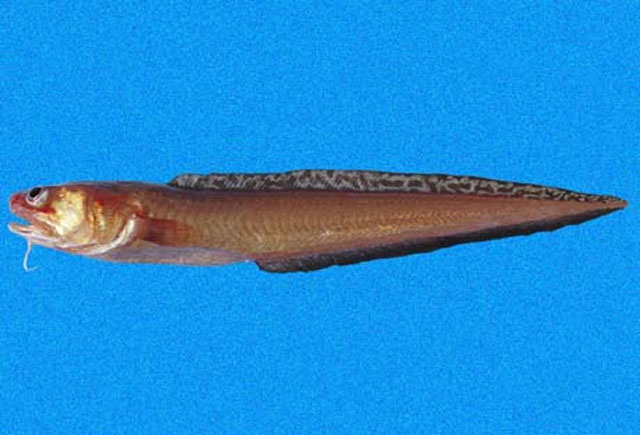| Ophidiidae (Cusk-eels), subfamily: Ophidiinae |
| 52.7 cm SL (male/unsexed) |
|
demersal; marine; depth range 40 - 390 m |
| Eastern Pacific: Gulf of California, outer coast of Baja California, and off northwestern South America. |
|
Dorsal spines (total): 0-0; Dorsal soft rays (total): 134-148; Anal spines: 0-0; Anal soft rays: 111-123; Vertebrae: 75-80. This species is characterized by the following: usual number of vertebrae, precaudal 16 (14-17), caudal 60-62 (59-64), total 76-78 (75-80); fin rays, dorsal 138-146 (134-148), anal 117-120 (111-123) pectoral 23-24 (21-25); pyloric caeca 4-5 (3-6), usually 3-4 in one whorl, 1-2 in second tier, sometimes 1 in a third tier; first gill arch with rudimentary rakers 3 (2-4) on the upper arm, 4 (sometimes 5) developed but short rakers on lower arm, rudiments anterior on the first arch vary from 1-10 (usually 5-8); total rakers 12-16 (9-18) with most of the variations due to the rudiments; dorsal-fin origin between neural spines 4-5 (26 specimens) or 3-4 (17 specimens) (Ref. 91765). |
| Common species (Ref. 34024). Adults inhabit soft bottoms, from shallow waters to moderate depths (Ref. 9329). Oviparous, with planktonic larvae (Ref. 36413). Oval, pelagic eggs float in a gelatinous mass (Ref. 205). |
|
Least Concern (LC); Date assessed: 23 May 2007 Ref. (130435)
|
| harmless |
Source and more info: www.fishbase.org. For personal, classroom, and other internal use only. Not for publication.

